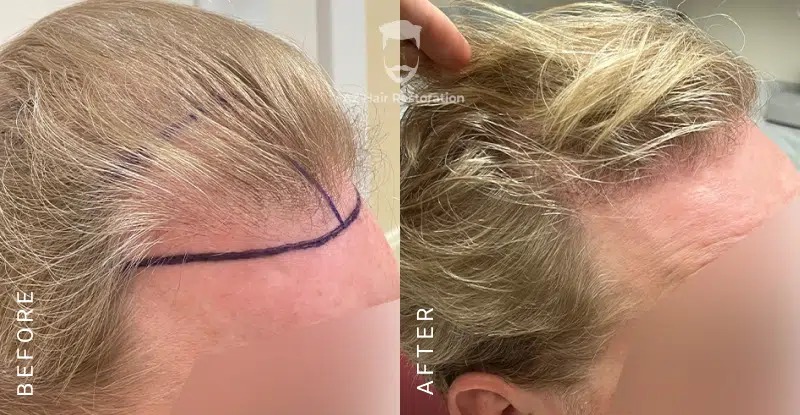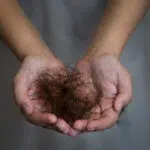Hair Transplant Aftercare: Your Ultimate Guide to a Smooth Recovery
Last updated on October 9, 2025
A hair transplant is a major step toward restoring fuller, thicker hair—but the success of your procedure doesn’t end in the operating chair. Proper aftercare and following hair transplant post op instructions plays a crucial role in healing, preserving grafts, and achieving natural-looking, long-lasting results. Whether you’ve had an FUE (Follicular Unit Extraction) or FUT (Follicular Unit Transplantation) procedure, knowing what to expect during recovery—and how to care for your scalp—will make all the difference.
Here’s your ultimate guide to hair transplant aftercare, filled with practical advice and professional insights from specialists in female hair transplants, male hair transplants, and medical hair growth treatments, to support a smooth and successful healing process.
FUE vs. FUT: What to Expect During Recovery
Recovery time and healing experiences differ between FUE and FUT procedures. FUE is a minimally invasive technique that uses 0.7-0.9mm punches to extract individual follicles, resulting in small circular wounds that are typically no longer visible within a few days. It is very important to keep in mind that, for both the FUT and FUE procedures, the healing is the same in that they both take 7-10 days for the graft scabs to fall off, resulting in the hair transplantation no longer being visible. The big difference in the healing time in FUE vs FUT is that the donor area requires about 3 days to no longer be visible, and the FUT takes about 7-10 days to no longer be visible, concerning just the donor area. However, the recipient area of both procedures takes the same amount of time, 7-10 days for the scabs to fall off and no longer be visible. Therefore, it is misleading to say the FUE heals faster than FUT. The donor area heals faster, not the recipient area, which takes 7-10 days for both procedures. It is important to realize that both procedures result in donor area scarring. Even though the FUE procedure produces little round dot scarring that can be hidden with very short hair. The FUE procedure produces approximately three times more scarring than the FUT procedure, which can be easily calculated by knowing the number of grafts. Since the FUE procedure produces 3 times more scarring in the donor area, it limits the amount of tissue harvested and the number of procedures to one large hair transplant (2500 to 3000 follicular units) or two small to medium procedures (1000 to 1500). Since FUT produces less scarring per procedure and the previous FUT scar can be removed with every subsequent hair transplantation, FUT can move more hair per procedure and ultimately transplant more hair. So if a person has a lot of balding or anticipated future balding and requires 3 or 4 large procedures, they would only have one linear scar, which is usually hidden by hair clipped with a number 2-4 guard. The maximum amount of large hair transplants a FUT can provide is 4-5, compared to 1 with the FUE procedure. These real patient before and after FUE hair transplant photos help you see the results for yourself.
FUT hair transplants, on the other hand, involve removing a narrow strip of scalp from the donor area. While this method allows for a larger number of grafts in one session, it typically requires a longer recovery period. The donor site is closed with stitches or staples, which may cause more initial soreness and will leave a linear scar. FUT patients should avoid strenuous activities for a longer time compared to FUE. Choosing the right method depends on your hair goals, medical history, and lifestyle, and you can see before and after FUT photos here to help you decide.
The First 24–72 Hours: Rest and Gentle Care
The first few days after your hair transplant are critical. Your scalp will likely be tender, and the newly transplanted follicles need to be protected while they settle.
What to expect:
- Mild swelling, redness, and scabbing around the grafts
- Some soreness or tightness in the donor area (especially with FUT)
- Possible numbness, which is temporary
What to do:
- Sleep with your head elevated at a 45-degree angle for the first 3 nights to reduce swelling. Sleeping in a chair or with several pillows behind your upper back is recommended.
- Avoid touching, scratching, or rubbing the transplanted area.
- Do not wash your hair until instructed by your doctor—usually after 48–72 hours.
- Do not wear hats, even loose fitting hats, to avoid disturbing grafts.
At AZ Hair Restoration, we provide each patient with clear, personalized hair transplant post op instructions to ensure the best outcome from day one.
Washing Your Hair: How and When to Start
Proper hair washing helps remove scabs and keep the scalp clean—but it must be done carefully to avoid dislodging grafts.
When to start:
Most patients begin gentle washing 48–72 hours after surgery, using lukewarm water and a mild, sulfate-free shampoo recommended by the clinic. Please note, it is essential that you do not wash your hair until your doctor says it’s okay to do so.
How to wash:
- Mix shampoo with water in a cup.
- Gently pour it over the transplanted area—don’t rub or scrub.
- Let it soak for a few minutes.
- Rinse gently by pouring water, not directly spraying.
- Pat dry with a clean, soft towel—don’t rub.
This process is typically repeated daily for 7–10 days until all scabs naturally fall off.
Common Side Effects: What’s Normal?
While recovery is generally smooth, it’s important to know what’s normal and what requires medical advice.
Normal side effects:
- Swelling in the forehead or around the eyes (especially days 2–4)
- Scabbing and mild itching
- Shedding of transplanted hairs in the first 2–4 weeks (this is normal and temporary)
When to call your clinic:
- Persistent bleeding or pain
- Signs of infection (pus, excessive redness, warmth)
- Unusual swelling or bumps
What to Avoid in the First Two Weeks
New grafts are delicate and need time to take root. During the first 10–14 days, avoid:
- Strenuous exercise or any activity that causes heavy sweating
- Swimming (chlorine and bacteria can irritate the scalp)
- Direct sun exposure—wear a hat or stay in the shade
- Alcohol and smoking, which can interfere with blood flow and healing
- Hair styling products like gel, spray, or dry shampoo
The Shedding Phase: Don’t Panic
Around week 2 to week 4, many patients notice their newly transplanted hairs start to fall out. This is called shock loss, and it’s completely normal.
The follicles themselves remain intact under the skin—only the hair shafts are shed. New, permanent growth usually begins around 3–4 months post-transplant, and continues to improve over 6–12 months.
Long-Term Aftercare: Supporting Healthy Regrowth
After the initial healing period, your focus should shift to supporting new growth and maintaining scalp health.
What helps:
- Continue using a gentle, nourishing shampoo
- Massage the scalp gently to improve circulation (after full healing)
- Eat a balanced, protein-rich diet with plenty of vitamins and minerals
- Consider supportive treatments like Growth Factor Therapy to enhance follicle activity
At AZ Hair Restoration, we offer post-transplant support plans that may include medication, growth treatments, or follow-up evaluations to ensure optimal long-term results.
Timeline of What to Expect During Hair Transplant Recovery
Here’s a quick overview of the typical recovery and regrowth timeline:
- Days 1–3: Swelling, scabbing. Follow aftercare instructions carefully
- Days 4–10: Scabs fall off; redness fades. Begin gentle washing
- Weeks 2–4: Shedding phase begins (shock loss)
- Months 3–4: New hair starts growing
- Months 6–9: Visible thickening and shaping of the hairline
- 12 months+: Final results with full density and coverage

You’re in expert hands at our hair transplant clinic, where we provide clear aftercare instructions, ongoing clinical support, and advanced growth treatments to ensure your recovery is smooth and your results are lasting.
Healing Is Part of the Journey to Permanent, Thicker Hair Growth
A hair transplant is a life-changing investment—but proper aftercare is what turns it into a lasting success. With patience, consistency, and the right support, you’ll see your hair grow stronger and fuller over time.
At AZ Hair Restoration in Raleigh, NC, we don’t just perform transplants—we guide you through the entire journey. Dr. Arthur Zacco and our experienced team provide detailed aftercare, ongoing support, and advanced treatments designed to give you the thickest, healthiest hair possible.
Book your free consultation today and discover how we can help you enjoy a smooth recovery—and results you’ll love.
FAQs
How long is recovery after a hair transplant?
Most patients resume normal activities within 2 days, but full recovery takes about 2 weeks. Scabs usually fall off within a week, and you’ll see new growth begin around the 3-month mark. At our hair restoration clinic in Raleigh, we guide you through every stage of recovery with expert care and support tailored to your procedure type. Book your free consultation now.
Can I go back to work after a hair transplant?
Most people return to non-strenuous work within 2–5 days, depending on swelling and comfort. We recommend avoiding high-impact activities and sun exposure during the first 10 days. Dr. Arthur Zacco and the team at AZ Hair Restoration will provide personalized aftercare timelines based on your lifestyle and healing progress. Take a look at our before and after hair transplant results here.
What should I avoid during recovery?
Avoid exercise, scratching, rubbing, swimming, alcohol, smoking, and direct sun exposure for at least 10–14 days. These can interfere with healing and affect results. At AZ Hair Restoration, we provide a complete aftercare checklist so you’ll know exactly what to do—and what not to do—for best results for male surgical hair restoration and female hair transplants. Book your free hair transplant evaluation today.
Is itching normal after a hair transplant?
Mild itching is very common as your scalp heals and the grafts settle. It usually peaks around days 5–7 and then fades. Avoid scratching, as it can dislodge grafts. Dr. Arthur Zacco, our hair transplant surgeon, will show you how to manage itching safely and effectively at our hair transplant clinic in Raleigh, NC, using gentle techniques and clinic-approved products.
Can I speed up hair growth after a transplant?
Following aftercare instructions and using supportive treatments like Growth Factor Treatment, exosomes treatment, proper scalp care, and a nutrient-rich diet can promote faster, healthier regrowth. At AZ Hair Restoration in Raleigh, we offer advanced post-transplant treatments to help activate follicles and support thick, natural growth—book your free hair transplant surgery consultation to learn more.








